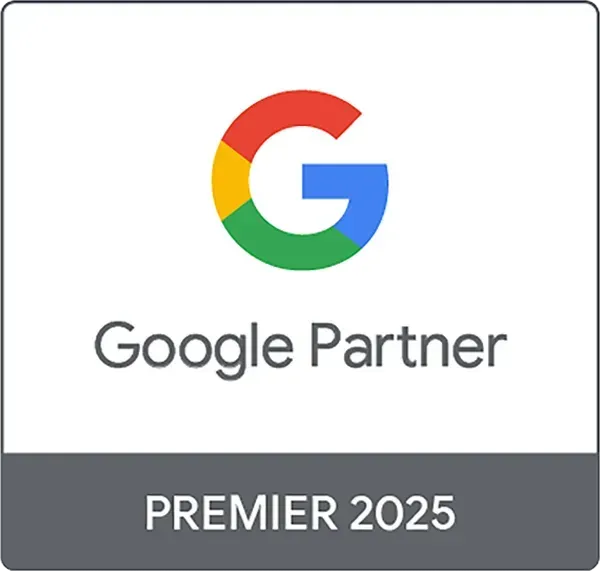As marketers and business leaders, you know that strong, distinctive branding is key to selling your products and services to your target markets. You’ve developed the visual and verbal language to communicate your brand to your audiences—but can you say the same for your employer brand?

Employee Experience: The Bedrock of Your Employer Brand
Your employer brand is essentially your reputation in the job marketplace, and it can make or break your recruitment strategies. In the job market, candidates are the consumers and employers are the product.
It’s your responsibility to “sell” candidates on your workplace and open positions, and your greatest asset in closing that deal is a strong employer brand strategy.
Employee Experience: The Bedrock of Your Employer Brand
Your company’s employee experience is the foundation of your employer brand.
The phrase “employee experience” refers not to the content of an applicant’s resume, but to the quality of the lived experience of your employees, i.e.: What is it like to work here? Do current and former employees speak highly of your company’s culture, benefits, and management? What do employees talk about when they talk about working here? Essentially, developing an authentically supportive and engaging workplace culture is the bedrock of solid employer branding.
Marketing Your Workplace Culture
It’s important to remember that your employer brand in the marketplace may not always reflect the best parts of your employee experience. A recent study by Career Arc showed that 75% of job seekers consider an employer’s brand before applying for a position, and 82% visit employer review sites while researching an employer’s brand. If employees are leaving negative reviews of your company on hiring sites, that can have a serious impact on your reputation as an employer.
It goes without saying that your first line of defense against negative employee reviews is to be a great employer, but a strong secondary employer brand strategy is to showcase your employer brand and positive reputation throughout your online presence. A well-designed careers page on your website should feature glowing testimonials from real employees, competitive hard and soft benefits, and photos and videos of your workplace. These elements should carry over to your job posts on hiring sites, your social media presence, and anywhere else a potential hire may encounter your employer brand.
Building awareness in the hiring marketplace—not just of your company, but of your positive brand as an employer—is critical to capturing applicants and starting them on the applicant journey.

What is an Applicant Journey?
The applicant journey is the path a prospective hire takes from their initial encounter with your employer brand to being hired.
Ideally, the average applicant journey for a prospect with your company will be simple and seamless, designed to make it as easy as possible for the best-qualified applicants to get in front of your hiring team. Any roadblock during the applicant journey can negatively affect your completed application rate.
Once your company passes a prospect’s initial vetting of your employer brand via review sites, social media, etc., they will move on to your job listings and begin the application process. For many employers, this is the step in which applicant interest is most often lost, leading to fewer completed applications. Why? A poor application experience.
Most job seekers are filling out many different job applications during their search, often from their smartphone rather than a desktop computer. That means the length, ease, and compatibility of your application form matters—and can cause you to lose candidates. According to Recruitics,
21% of candidates will drop off a mobile application of over 3 pages.
60% will skip out on an application that requires you to make an account.
The best way for employers to ensure a positive applicant experience is to put themselves in their prospects’ shoes. Try applying to one of your company’s current job postings from a smartphone and see what barriers you encounter.
Ask yourself:
- Is the application page easy to find from the homepage of your company website?
- Does the form page load quickly and without formatting or performance issues?
- Can you complete your application in its entirety from your smartphone without having to open multiple browser windows, apps, etc.?
- Would you want to complete this application process if you were an applicant? Why or why not? What elements of the application process factor into your answer?
- How can the process be streamlined to support easier and quicker initial application completion?
Ultimately, user experience and convenience matter to potential applicants. Unless your HR team is already drowning in applications, your best tactic is to lower the initial barrier to entry and up the appeal of your employer brand.

Retention + Recruitment Strategies
According to LinkedIn Talent Solutions, the #1 way job seekers discover a new listing is through a referral, and employee referrals are the top source of quality new hires.
Recruiting and retention go hand-in-hand: Satisfied current employees are often the greatest source of new, reliable talent. But in order to get those great referrals from current employees, you first have to retain your current employee base.
The best strategies for employee retention come down to employee happiness and your risk/reward proposition—namely, what do employees like about working for you over other employers? What “rewards” of employment at your company do your employees feel are too valuable to risk losing if they were to accept a position with another employer?
Many of these elements will reveal themselves to you as you investigate and develop your employer brand. You’ll see your competitive advantages spelled out in positive employee reviews—think outstanding benefits package, positive and supportive culture, unlimited PTO, etc. Building upon and expanding these advantages internally will bolster your employee retention rate, and showcasing them via your careers page, job postings, and social media will boost your employer brand externally.
Now that you’ve retained stellar employees over time, it’s important to consider your employee referral strategy.
The first step, as in your overall recruitment strategy, is awareness: Do you have an employee referral incentive program? Do your current employees know about your referral program? Employees can’t make strong referrals if they don’t know you’re seeking them!
However, successful employee referrals are a one-two punch, requiring awareness and action on both the part of the current employee and the prospect. Once a referred prospect is in the application stage, is there a space on your application where they can identify the employee who referred them? Do you include a second touch-point during the interview process to ensure both the referring employee and the new hire are recognized?
Speaking of recognition, incentives are the critical second component of a strong employee referral strategy. Employees are more likely to engage with the referral process if they are motivated to do so via monetary incentives or other recognition. The most compelling referral programs offer a bonus to both the referring employee and the applicant who was referred. You may even survey your current employees to learn what types of referral incentives they’d be most interested in, ensuring that your subsequent offerings are more likely to spur them to action.
The Bottom Line: A Strong Employer Branding Strategy Is the Key to Success
Your employer branding is a hugely influential factor in your recruiting success, and it is shaped by the experience and satisfaction of your current employees. Building upon your strengths as an employer to increase employee happiness—and therefore retention—can have a positive ripple effect on your reputation as an employer, the number of completed applications you receive, and the quantity and quality of employee referrals.
To hold onto the attention of prospective employees once you’ve captured it, it’s important to ensure the applicant journey is as simple and seamless as possible. Embarking on the applicant journey yourself is a great place to start: You’ll quickly identify roadblocks and gain firsthand knowledge of your applicants’ experience that will direct your strategy moving forward.
Finding the Right Employer Branding Consultant
Partnering with the right employer branding consultant is the key to making the most of your recruiting and retention efforts. With the right collaborator by your side, not only can you fine-tune your recruitment strategy, but you can also effectively showcase your brand to attract top-tier talent.
At Dayta, we go the extra mile to delve into the core elements that make your organization an exceptional workplace. Our dedicated team will market your unique selling points to grow your applicant pool with qualified candidates. Contact us today for a free assessment! Happy headhunting!
Share This Post





